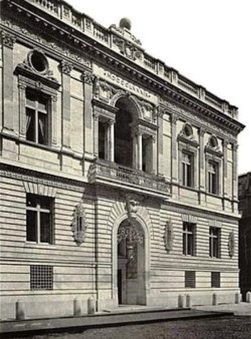

- IRIDIENT DEVELOPER RAF PREVIEW OPEN LIBRARY FULL
- IRIDIENT DEVELOPER RAF PREVIEW OPEN LIBRARY PRO
- IRIDIENT DEVELOPER RAF PREVIEW OPEN LIBRARY PROFESSIONAL
Try putting the XT-2 / XF16-55mm combo next to a comparable CaNikon full frame DSLR with 24-70mm f/2.8 zoom attached. It's also perceived as being less intrusive by your subjects. The lens is reasonably compact and remains portable. Even it would've been technically possible to also include OIS, the caveat of further increasing size and weight (and not to forget the price) of the lens would have not been worth it (for the previously described use case). I guess Fuji followed a similar logic when they decided to opt out of OIS on the "Brick".

In this scenario image stabilization don't really help me. So, Fuji´s XF 16-55mm f/2.8 WR fits above requirements like a glove (while my XF 18-135mm missed out on the first two). I use the XF 16-55mm predominantly for reportage and portraiture, where my subjects are usually moving. Portability: Reasonably compact camera/lens combo, no tripod or gear bags to lug around.High quality zoom lens - don’t fancy changing lenses (I got amathophobia - fear of dust -).Reaching at least up to portrait focal length (85mm FF equiv.) on the long side.With at least a 16mm (24mm FF equiv.) on the wide side for architecture & group photos.Max possible aperture to freeze subject movement (image stabilization don't help here!).Now why would I go and trade my perfectly good OIS zoom for such an OIS-less "Brick"? It wasn't easy but in the end the following factors tipped the scales for me in favor of the "Brick": I've learnt I need 5 things for my architecture / landscape / people photography: This Lens' missing OIS has caused some on the net to fondly call it "The Brick" (like as in a worthless paper-weight). 1.2 when going square! See the below image, taken with the XF 16mm, it looks more like an image taken with the 18mm:Ĭoz I’d traded my XF 18-135mm f/3.5-5.6 (with OIS) to get an XF 16-55mm f/2.8 (without OIS). For example Fuji’s XF 18mm / 28mm Full Frame equivalent FOV behaves like the XF 23mm / 35mm Full Frame equivalent FOV lens, the XF 23mm / 35mm Full Frame equivalent FOV like the XF 35mm / 53mm Full Frame equivalent FOV, and so on - basically you can multiply your focal length by a factor of appox. For those of youse not so much into math here’s the thing: Cropping your native 3:2 aspect ratio image to a square 1:1 aspect ratio generates a field of view (FOV) which makes your lens look like the next longer lens in your system. The angle of view of a lens determines how much of the image you can cover and is calculated according following formula: 𝜶 = 2arctan(d/2𝑓), where 𝜶 (alpha) is the lens’s diagonal angle of view in degrees, d represents the length of the image’s diagonal in mm (28.23mm for the uncropped Fuji APS-C sensor) and 𝑓 is the focal length of your lens in mm. Now before y’all gettin’ too excited here, there’s just one caveat: When shooting square you gotta be aware (WOW, that rhymes -) that shooting in the square format reduces your lens’s effective angle of view.
IRIDIENT DEVELOPER RAF PREVIEW OPEN LIBRARY PRO
I usually prefer to decide that when developing the image in Capture One Pro - some images only lend themselves to the square format at a second (or third) glance! You can apply the square format during image capture (obviously this works only for JPEG´s - the RAW image always uses the full native format of the camera) or in post production. dating back to the times where images were still painted (at least I couldn’t find anything …)Īnyway, with the advent of the digital age came a greater flexibility regarding image aspect ratios, allowing the photographer to choose already in camera or afterwards in post production from a plethora of image formats from 16:9 to 1:1 Interestingly enough there does not really seem to be much older history of the square format, eg. So if the camera would’ve had a rectangular image format it would have needed to be turned onto its side for portrait images, which would then have resulted in an upside-down viewfinder image! To prevent this inconvenience the manufacturers of the time stuck with a square image format

This image was upright but laterally reversed.
IRIDIENT DEVELOPER RAF PREVIEW OPEN LIBRARY PROFESSIONAL
Since 2010 Instagram has enjoyed a great success as online image sharing platform - until August 2015 only square images were allowed, driving somewhat of a renaissance of the square format: As Instagram is mainly viewed on smartphones, using a square image format means you aren’t required to turn your phone sideways for landscape images, allowing for a more ”smooth” user experience…īut the square format was there long before Instagram came along: Around 1930 first professional larger square format cameras appeared (Rolleiflex, Voigtländer and Hasselblad to name a few), using a reflex mirror to project the image onto a matte glass plate which could be viewed from above.


 0 kommentar(er)
0 kommentar(er)
